Introducing the Raide Research LF 40L Pack
The Arena Media Brands, LLC and respective content providers to this website may receive compensation for some links to products and services on this website.
I am a certified dork. Being Powder’s Gear Editor sort of requires a baseline level of dorkitude that I easily meet. But I am specifically a pack dork. Sure, I care about skis and boots and bindings and outerwear, but I really care about backpacks. That’s why I was excited to write about Hyperlite Mountain Gear’s new Crux pack, and why I was even more excited to stumble upon a thread where Kyle Siegel of Raide Research was teasing his new pack which he claims beats the Crux on price, weight, and durability.
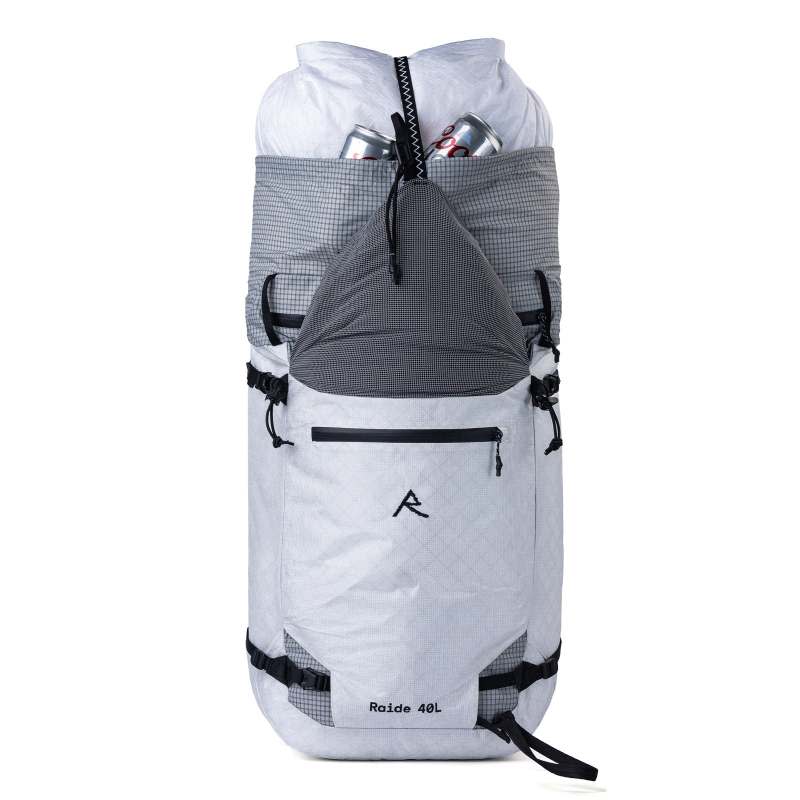
Photo: Raide Research
I’ve spent the last couple of weeks playing around with a pre-production Raide Research LF 40L Pack, and have been really impressed by the combination of features, weight, and usability. But before we get into that, some context.
Who is Raide Research?
Raide (French for “steep”) Research is the brainchild of Kyle Siegel. Kyle has worn a number of hats over the years, including stints at The North Face and SpaceX. A few conversations with Kyle have revealed that he’s passionate about the details that improve our time in the mountains. There’s a growing movement in backcountry skiing to borrow equipment and efficient philosophies from skimo racing, and meld them with a higher-speed, more freeride-oriented skiing style. Kyle, and Raide, are very keyed into that intersection, where fast and light meets fun and sendy.
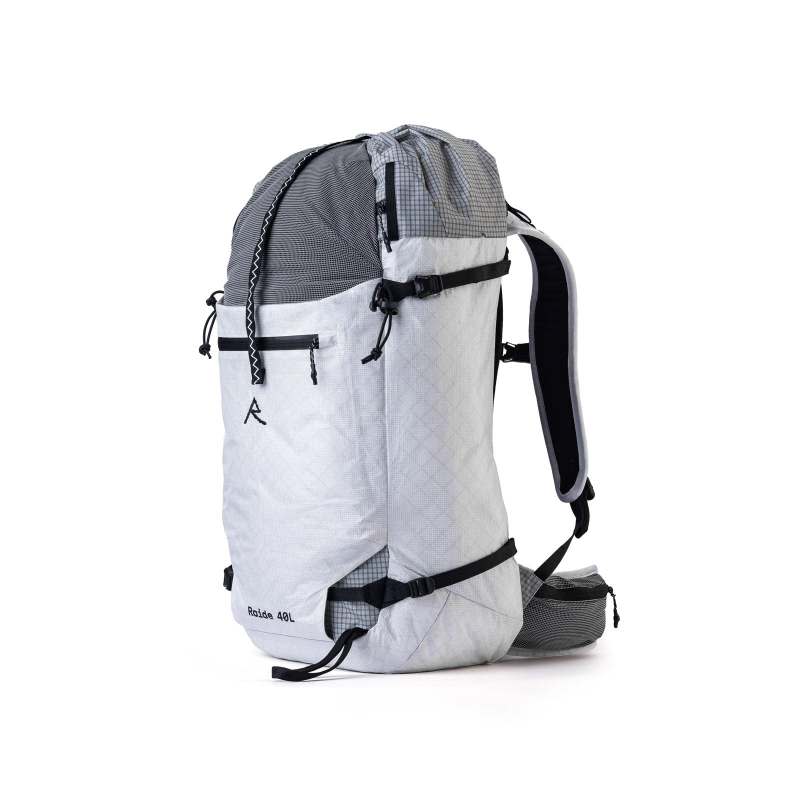
Photo: Raide Research
Raide is launching with two products: the LF 40L pack, and a forward lean mod for Tecnica’s Zero G boot that increases its forward lean angle by 3°. That range, from a lightweight do-it-all pack to a very niche, specific product designed for a very small subset of skier, is indicative of Raide’s philosophy. Dial in the details, build products around performance, not marketing, and let the rest follow.
What’s the deal with this pack?
We’ll have a full review coming once there’s snow on the ground, and I’ll have plenty more to say there. For now, if I was buying a new do-it-all pack for this winter, this is the pack I would purchase. It’s really well thought out, and I think it’s going to streamline my backcountry skiing. It’s designed as a do-it-all touring and ski mountaineering pack. There are other volume options in the pipeline, but for now, it’s only available in the versatile 40L size. In my experience, that’s a great size for most skiers, on most days.

The contents are accessible through both a combination roll-top/cinch closure we’ll talk more about later, as well as a back panel zipper. There’s a nicely-designed avy tool pocket, a generous back pocket “garage”, a great helmet carry, room for two ice tools, diagonal or A-frame carry, accessory pocket, and more. Basically, the Raide LF 40L has all the features you’d expect from an ultralight ski mountaineering pack, combined with a few that you wouldn’t. So we’ll dive into those lower down.
Strong, Light, Cheap, Pick Two.
That’s an old axiom in mountain biking. You can have strong parts that are light, but they’ll cost you! However, with the LF 40L, Raide is coming out swinging on all three fronts. We’ll have a direct comparison review to the Hyperlite Crux later this winter, but for now, it’s definitely the Raide’s most direct competitor, so it’s worth making some comparisons.
The Crux retails for $499. The first 100 Raide packs are available on sale now for $299, and will cost $399 at full retail. Point: Raide. The Crux has a claimed weight of 1242 g. The Raide has a claimed weight of 1090 g. I’ll verify both those weights once I have both packs in hand at the same time, but for now, point: Raide.
Durability wise, it’s hard to make any real statements before testing, but the Raide uses Challenge Ultra 400X 400D UHMWPE (Dyneema), which they claim is two times more tear resistant and eight times more abrasion resistant than most of the Dyneema used in the Crux. No points to give here, since fabric durability is only one part of the equation for total pack durability. However, the Raide comes with a five year warranty, while Hyperlite carries a one year warranty. How either of those play out will, of course, depend on what kind of damage you do.
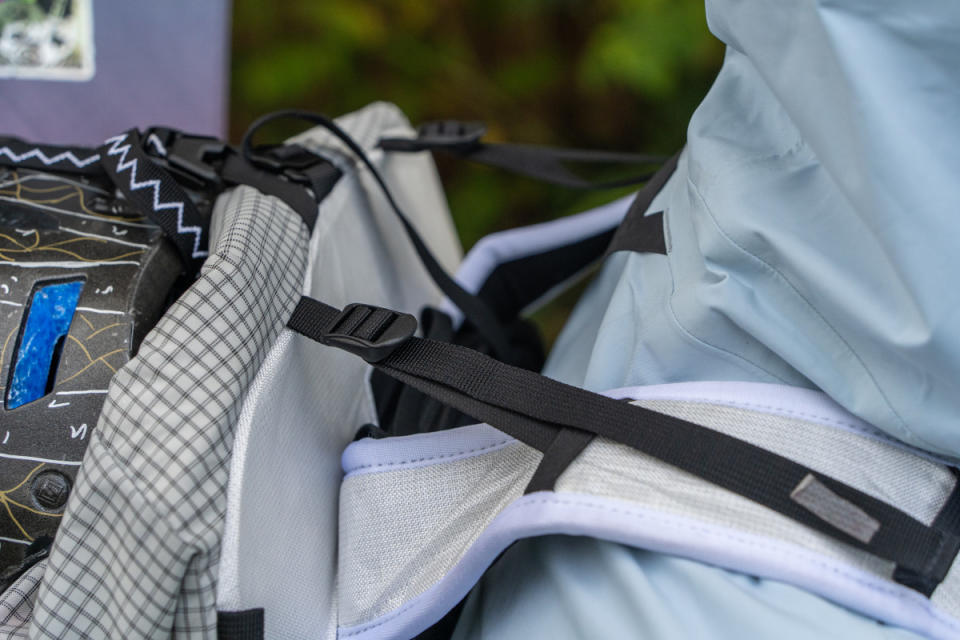
The one place the Raide pack gives up some points is sizing; it’s available in two sizes, a S/M and a M/L, whereas the Crux is available in four sizes, S,M,L and Tall. I have a fairly long torso and will be reviewing the Tall Crux, so I’m really interested in comparing the two packs when loaded up. The Crux is manufactured in Mexico, while the Raide is built in Vietnam in the same factory that builds packs for a bunch of other well known brands, including Mammut, Osprey, and BCA.
While the Crux is ostensibly the “new Cody Pack,” Raide boasts a strong roster of athletes out the gate, including Powder fave Jim Ryan.
Finally, the Raide LF 40L is available in two colors which I think should be called "I can talk at length about Dyneema white" and "I don't want grease and bloodstains to show on my gear black."
Standout Features
The Raide LF 40L has a bunch of clever and interesting features, and we’ll dive much deeper in our full review. For now, a rundown of some of the standouts.
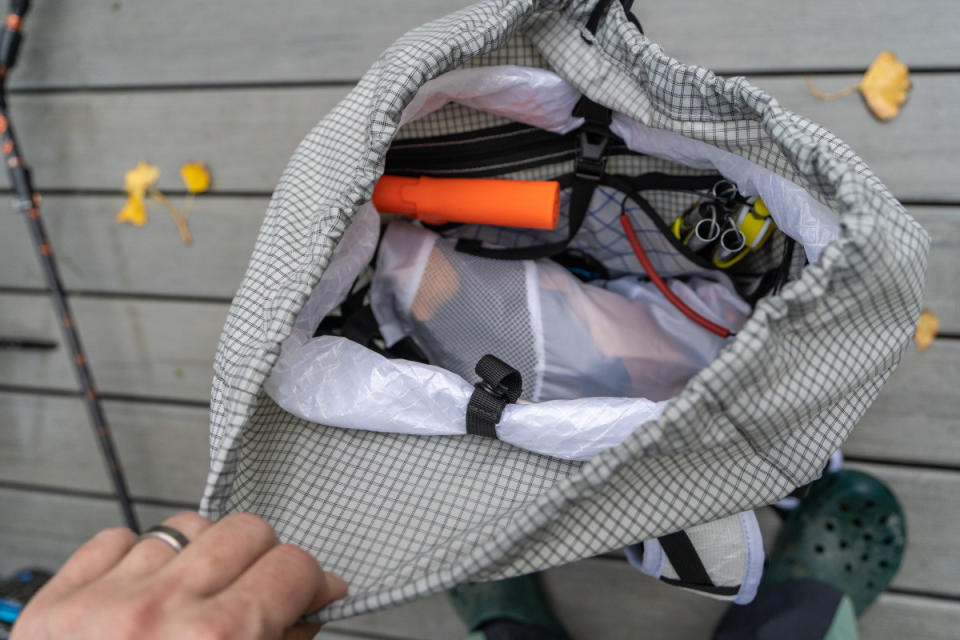
The top closure of the pack is a hybrid drawstring/rolltop system that my partner dubbed a “foreskin” closure.
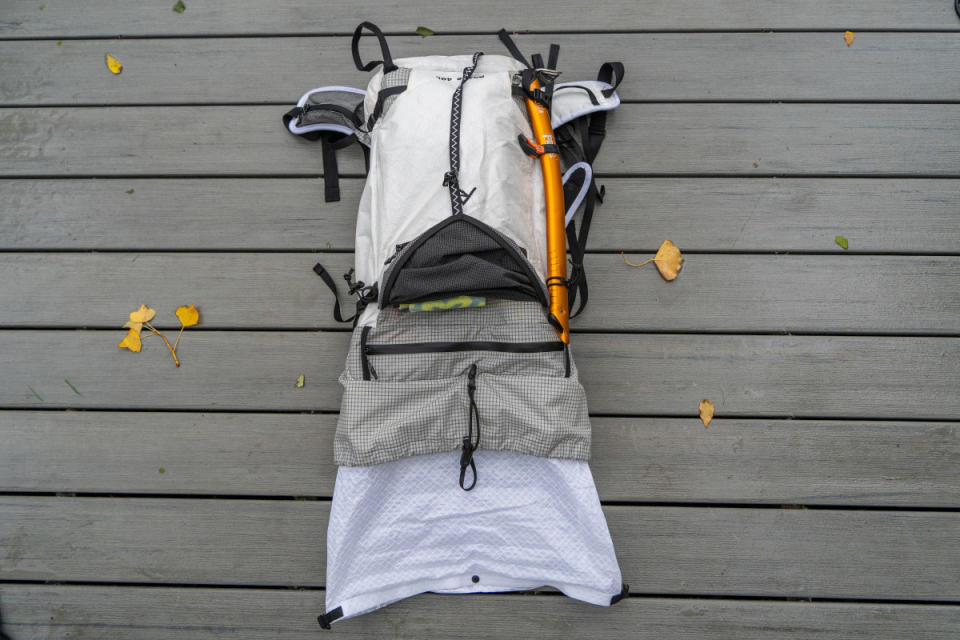
For some reason I don’t think that name will catch on though. Basically, the rolltop stows away, giving structure to the opening if you just want to use the drawstring closure. However, if you want the extra capacity and weatherproofing of the rolltop, it’s quick and easy to deploy, out, above the drawstring closure. This system also creates an additional “garage” where you can close the rolltop, stuff it down into the pack, and carry wet gear on top of it, separated from the rest of the pack, but still secured by the drawstring.
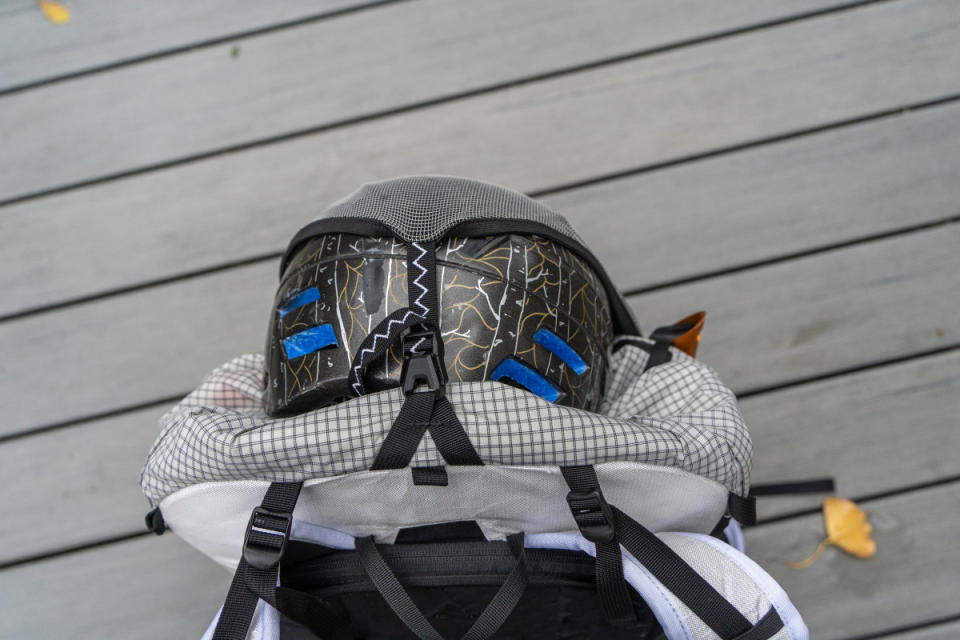
There’s another garage under the (excellent) integrated stretchy helmet carrier. This pocket runs the height of the pack, and has plenty of space for your skins, or even a light rappel or glacier line, stuffed in, separate from your dry gear. The helmet carry is easy to use, sleek, and secure.
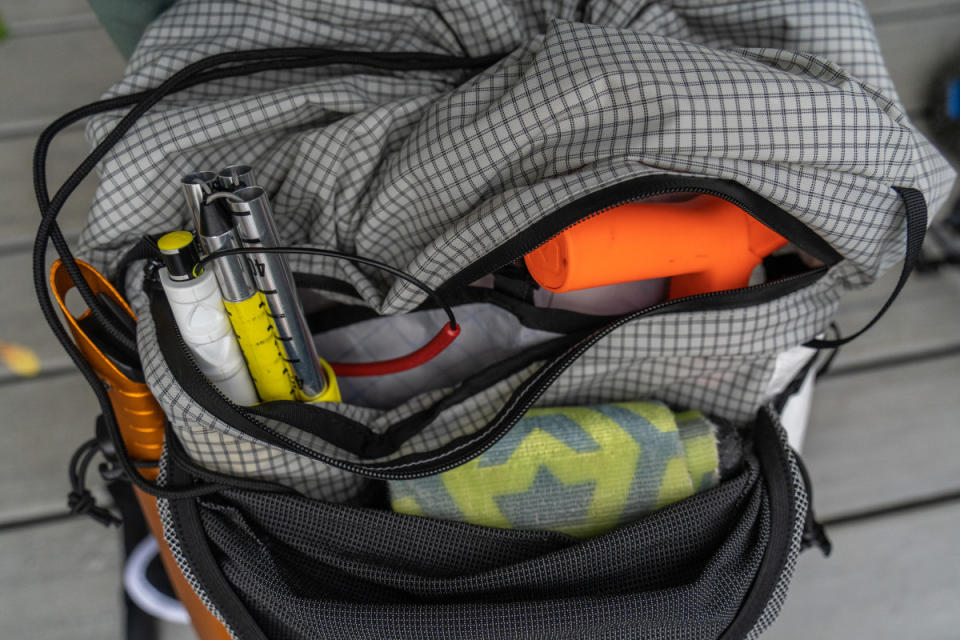
Behind the helmet carry is a zip through pocket that allows you to immediately access your avy gear from the outside of the pack. And yes, that avy gear pocket has a drain hole so melted snow doesn’t accumulate. There’s plenty of space for a proper shovel and long probe. Finally, there’s a cutout for the throat of your shovel, so it doesn’t tent out the pocket and reduce overall capacity.
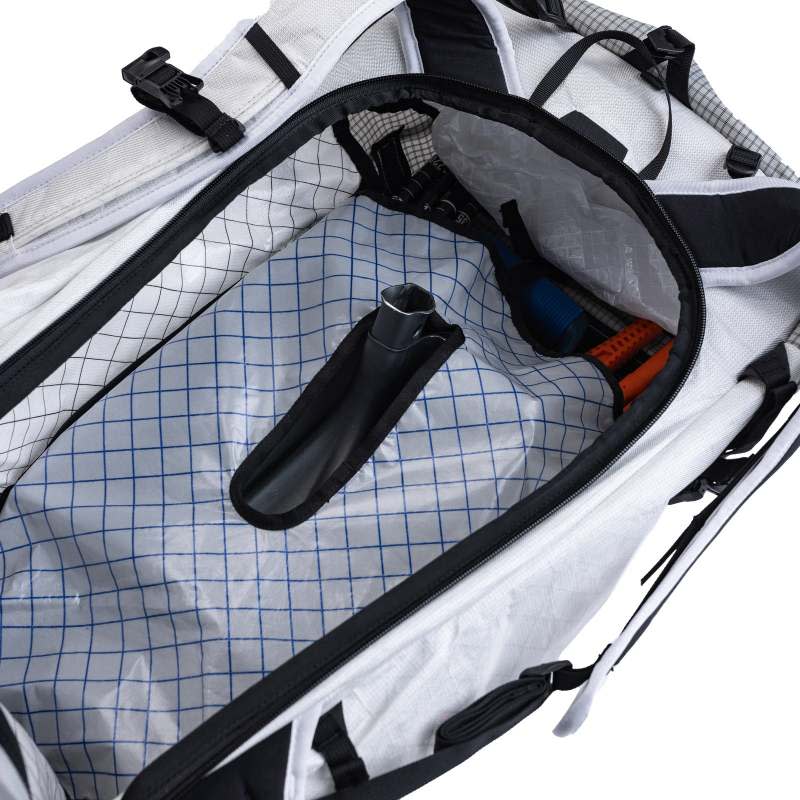
Photo: Raide Research
The external accessory pocket is nicely sized, the pack’s straps are easily set up for A-frame ski carry or snowboard carry, and the diagonal ski carry is particularly well executed. It’s secured to the frame of the pack, to help prevent ski flop, and is easy to use.
The ice tool carry protects the picks of both tools, and leaves one of them easy to access even with the pack on your back.
Up front, there’s a clever glove holder built onto the left shoulder strap, along with routing for a radio or hydration bladder from the main compartment. There’s a stretchy pocket with plenty of space for snacks or a phone on the right hip belt, and a gear loop on the left.
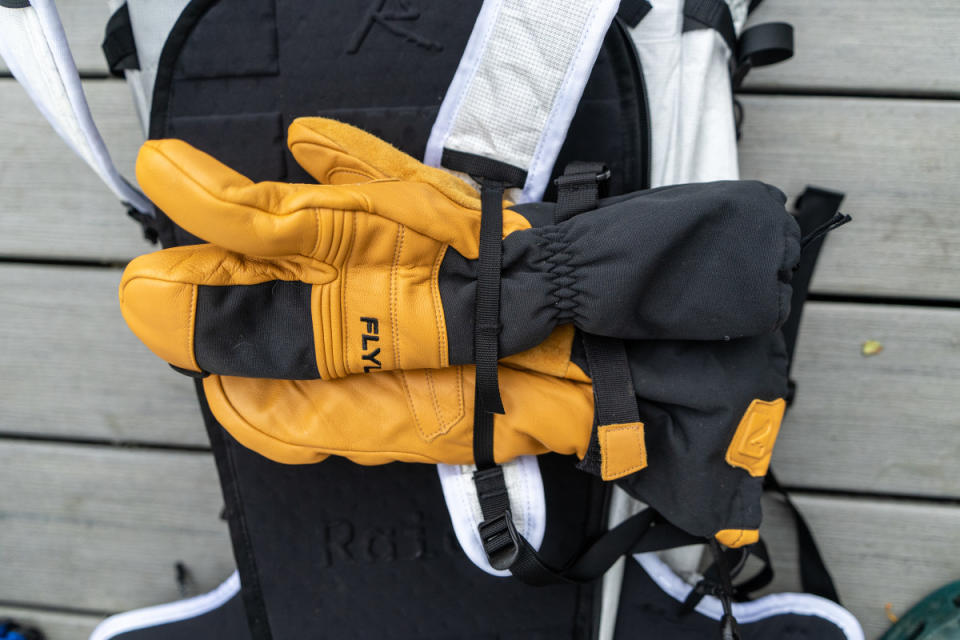
The back panel is removable, to use as a pad for sitting or kneeling. And this one is actually removable, as in, you can get it out and back in quickly, with gloves on. I hate packs with removable back panels where the panel is easy to get out but impossible to get back in. The LF 40L is a refreshing change on that front.
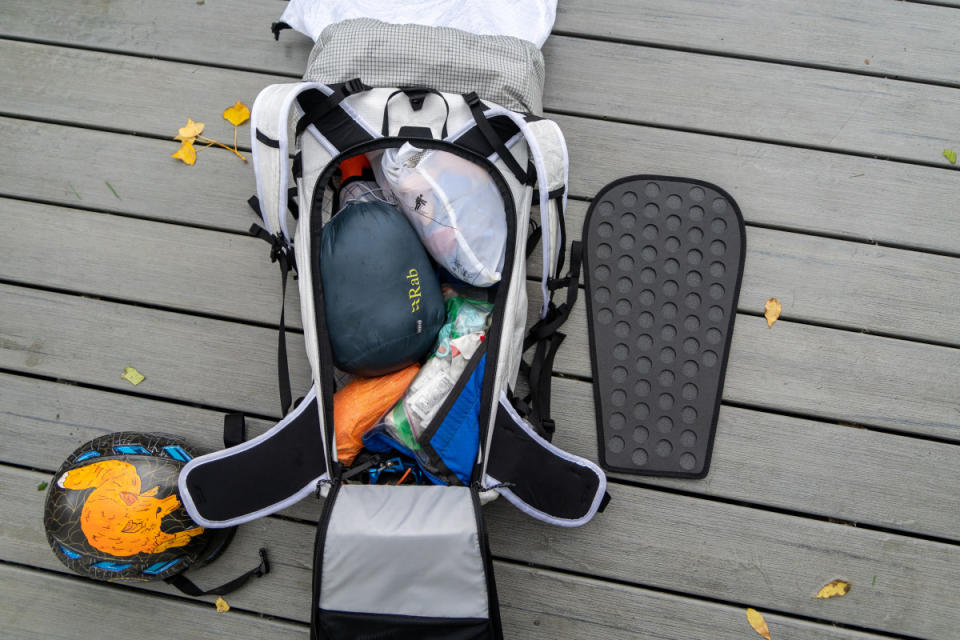
Inside that back panel is a big mesh pocket, and the heart of the pack, an aluminum frame. The black packs have a light gray lining, so you can easily see all your gear inside.
There are a bunch more interesting features, but we’ll save those for the full review.
For Now
No, I haven’t skied in the Raide LF 40L yet. Instead I’ve packed and unpacked it a few times, and gone for a walk around the neighborhood loaded down with my skis and all my gear. It carries really well, all the clever features work well, and I’m really, really excited to get out into the hills with it. Stay tuned for a full review once I’ve had time to get weird in this new pack.

